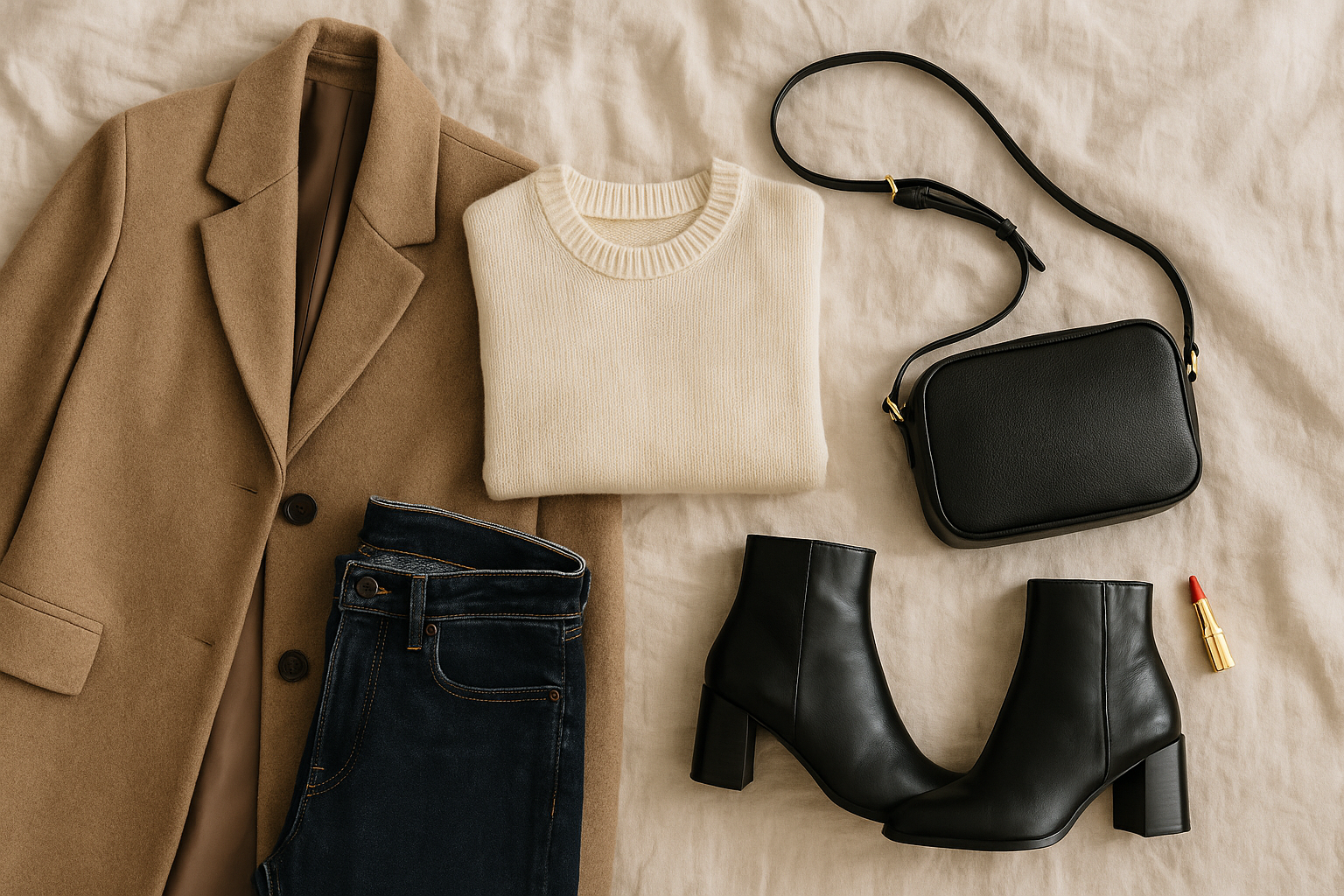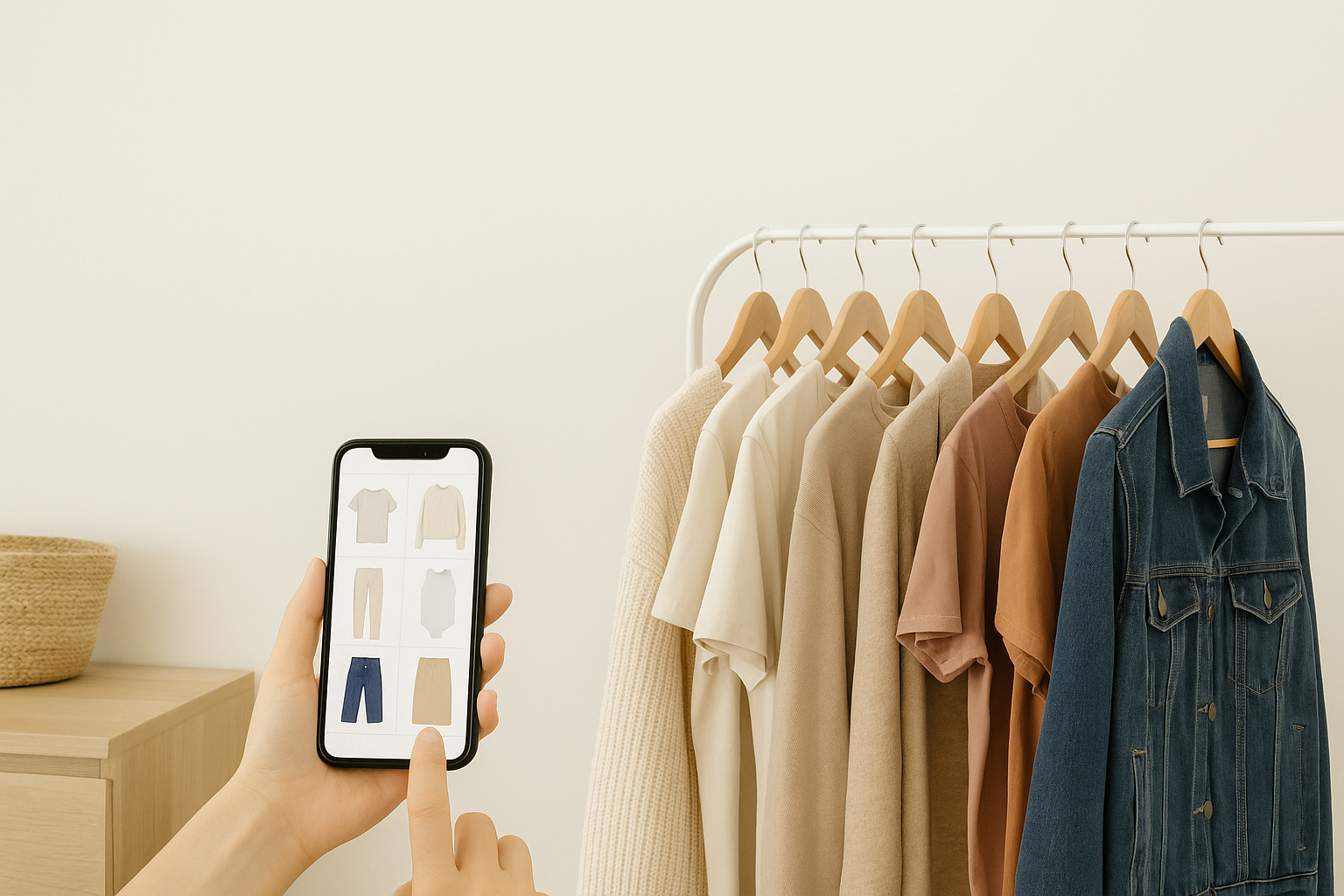
There’s a secret weapon sitting right in your closet—one that can totally transform your style without you ever having to buy new clothes. What is it? Accessories! Scarves, belts, jewelry, and bags—they’re the unsung heroes of any wardrobe. These little details can take a simple outfit and elevate it to a look that feels fresh, exciting, and 100% you. So let's dive into how you can use accessories to enhance your style, make the most out of your existing wardrobe, and fall in love with your clothes all over again.
1. Scarves: Your Most Versatile Friend
Scarves are the Swiss Army knife of accessories. They can add a pop of color, texture, or a whole new vibe to any outfit. And the best part? There are so many ways to style them.
- Around Your Neck: Of course, this is the classic way to wear a scarf. A scarf draped loosely over a plain tee and jeans suddenly makes the outfit feel chic. A silk scarf tied close to your neck adds sophistication to a simple dress or button-down shirt.
- In Your Hair: Bad hair day? No problem. Tie a patterned scarf around a messy bun or braid it into your hair for a playful, stylish look that instantly elevates your outfit.
- Around Your Bag Strap: Wrap a bright, colorful scarf around the handle of your bag, and boom—your whole look feels polished and pulled together.
But choosing the right scarf is more than just style—color matters too.
Pick the Perfect Scarf for Your Dominant Color Type
Scarves are an excellent way to bring your best colors close to your face, brightening your complexion and making your eyes pop. But how do you choose the right one? Here’s a quick guide based on your dominant color type:
- For Warm Skin Tones: If you have a warm, golden undertone, scarves in colors like mustard yellow, olive green, burnt orange, or rich camel will complement your complexion beautifully. These earthy tones will bring warmth to your face and pair well with most fall or winter outfits.
- For Cool Skin Tones: If you have cool, pink undertones, reach for scarves in blue-based tones like deep blues, sea greens, berry reds, or cool purples. Icy grays and silvers are also stunning options that can add an elegant touch to your look.
- For Neutral Skin Tones: Lucky you! Neutral tones can wear a wide variety of colors. Opt for taupe, blush pink, soft white, or even rich teals and reds to add just the right amount of color without overpowering your natural tones.
- For Muted or Soft Color Types: If your dominant color type is more on the muted or soft side, go for scarves in softer shades. Dusty rose, olive, soft mauve, or gentle blues will enhance your features without overwhelming them.
- For Deep or Clear Color Types: If you have deep, dark hair and eyes or a bright, vivid contrast between your hair and skin, embrace bold colors! Rich burgundy, cobalt blue, bright emerald, or even a bold black-and-white pattern will draw attention to your face and complement your striking features.
Refer to our Color Trend Report which we publish every season to find the best in-season shades for your dominant color type.
Style Tip: Use a Scarf to Contrast or Coordinate
When you’re accessorizing with a scarf, you have two ways to go—contrast or coordinate. For contrast, choose a scarf in a complementary color to make it pop against your outfit. For a more refined look, coordinate with the tones of your outfit for an elegant, streamlined style.
2. Belts: Define Your Silhouette
A belt isn’t just a functional piece; it’s a style game-changer that can transform the shape of your outfit and breathe new life into your wardrobe staples. With the right belt, you can accentuate your best features, create balance, and add a polished touch to almost any outfit. Here’s how to make the most of this versatile accessory, with tips tailored to different body types.
- Cinch Your Waist: Got a dress or top that feels a little shapeless? Cinch it with a belt to create an instant shape. A wide belt can draw attention to the narrowest part of your waist, making it perfect for adding definition to loose dresses or tunics. For a more subtle effect, a slim belt can still highlight your shape while keeping the look minimal.
- Layer Over Jackets and Coats: Belting over a jacket or coat is a great way to add unexpected style and structure. It can make oversized pieces feel more tailored and add a feminine touch to outerwear. Try it with a coat, blazer, or even a chunky knit cardigan for a look that’s both cozy and chic.
- Add a Pop of Color or Texture: A belt doesn’t have to be neutral or boring. Use it as a statement piece by choosing a bright color, bold pattern, or unique texture like braided leather or metallic. A colorful belt can liven up an all-black outfit, while a textured belt adds extra interest to simple looks.
Belt Tips for Different Body Types
- Hourglass Shape (Defined Waist): Accentuate your waist with a medium to wide belt worn at the natural waistline to highlight your curves. Thin belts can also work well when layered over fitted dresses or high-waisted skirts. When choosing belt width, consider your proportions! A wide belt will not work on someone with a short torso.
- Rectangle Shape (Straight Waist): Avoid wide belts around your natural waist unless they cinch in your waist considerably. Look for belts that sit at your hips or lay at an angle, reminiscent of the early 2000s style. They’re in this season!
- Triangle Shape (Wider Hips): Wear a belt at your natural waist to help balance proportions. Thin to medium-width belts in colors that match your outfit keep the look cohesive.
- Inverted Triangle Shape (Broader Shoulders): Try wearing a medium-width belt at the hips to add emphasis to the lower body, balancing out your broader shoulders.
Belt Placement Tips
- High Waist (Empire): Worn just below the bust to elongate the legs.
- Natural Waist: Cinching at the natural waist creates an hourglass shape.
- Low Waist (Hips): Wearing a belt at the hips adds a relaxed, bohemian vibe.
3. Jewelry: The Finishing Touch
Jewelry can make an outfit feel polished, glamorous, or effortlessly cool, depending on how you style it. Consider the scale of your pieces to complement your body proportions and your overall look.
Tips for Choosing Jewelry Based on Scale
- Small Scale (Petite or Delicate Frame): Go for thin bracelets, small stud earrings, or dainty necklaces. These pieces won’t overwhelm your features and can add a touch of elegance.
- Medium Scale (Average Build): Mid-sized earrings, layered necklaces, or bracelets with some texture work well. You can mix and match different jewelry scales to suit your style.
- Large Scale (Taller or Fuller Figure): Bold statement pieces like chunky bracelets, oversized hoops, or statement necklaces look proportional to your frame and add an eye-catching element.
Style Tips for Jewelry Scale
- Pairing Statement Pieces: If you’re wearing a bold necklace, keep other jewelry minimal.
- Layering with Scale in Mind: Start with the thinnest piece and add progressively larger ones.
- Earring Size vs. Hairstyle: Larger earrings for updos or shorter hair, and smaller earrings for longer hair.
4. Bags: Style That Carries It All
A bag is more than just a functional item—it’s an integral part of your outfit that can add color, texture, or structure. The right bag can transform your look, but it's essential to consider the bag's scale relative to your body type and the outfit itself.
Tips for Choosing Bags Based on Scale
- Small Scale (Petite Frame or Minimal Look): Smaller bags like crossbody purses or mini bags are ideal. They complement your proportions beautifully and are perfect for carrying essentials.
- Medium Scale (Average Build): Medium-sized bags like structured totes or satchels balance style and function. Their size is versatile enough for most occasions.
- Large Scale (Tall or Curvy Figure): Larger bags like oversized totes or statement backpacks look proportional to your frame and provide plenty of space for your belongings.
Style Tips for Bag Scale
- Day vs. Night: Larger bags for daytime and smaller clutches or crossbody bags for evening.
- Balancing Outfits with Bags: Smaller, structured bags for voluminous outfits; larger, slouchy bags for sleek outfits.
- Matching Bag Style to Your Frame: Petite individuals may prefer smaller bags, while taller figures can rock larger bags.
Transforming Your Wardrobe—One Accessory at a Time
So, next time you feel like you have “nothing to wear,” take a second look. Those simple outfits hanging in your closet are just waiting for a little refresh. Add a scarf, belt it up, layer on some jewelry, and grab a bag that feels like “you.” Accessories have the power to completely transform an outfit and make the most of what you already own. And the best part? They let you show off your unique style, one detail at a time. Check out our seasonal Trend Reports for inspiration on colors, patterns, and must-have pieces, and start creating looks that are fresh, stylish, and uniquely you. Fashion is about experimenting—let your creativity shine!


.svg)



